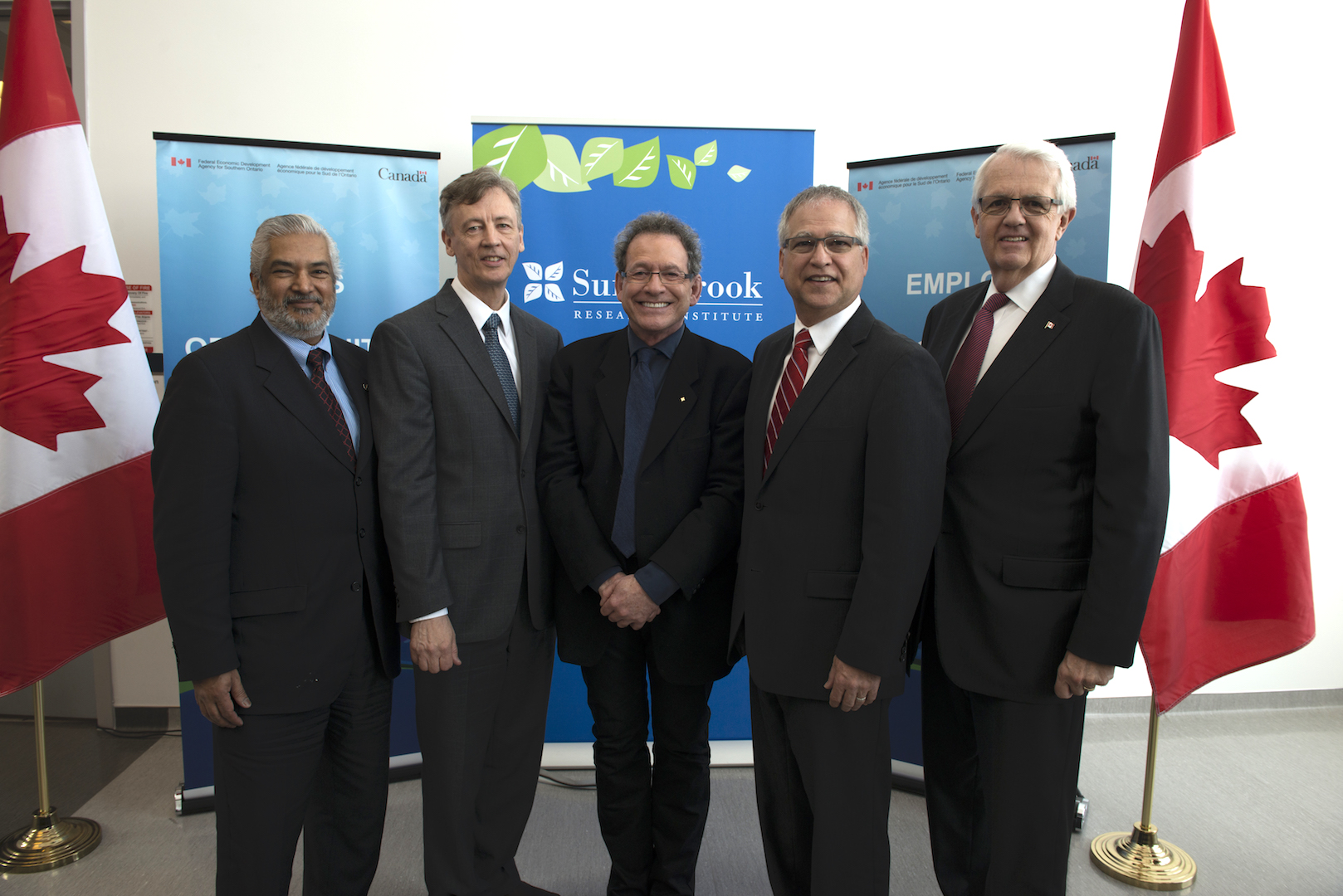Bringing scientific ideas to market
By Betty Zou
Sunnybrook Research Institute (SRI) will receive a $41-million investment to support the commercialization of innovative technologies in image-guided therapeutics. The Honourable Gary Goodyear, minister of state for the Federal Economic Development Agency for Southern Ontario (FedDev Ontario), and John Carmichael, member of Parliament for Don Valley West, announced the funding at SRI on April 10, 2015.
“I’m pleased this investment will help Sunnybrook to solidify the image-guided therapy technology cluster it has strongly established. This will lead to the design and export of innovative new technologies and the creation of high-value jobs here in southern Ontario,” said Goodyear.
The $20-million investment from FedDev Ontario will be matched by a $21-million investment from industry partners as part of FedDev Ontario’s Investing in Commercialization Partnerships initiative. The program aims to address the innovation and commercialization gap between research institutions and the private sector by fostering partnerships with both sides.
Building on the success of a previous $6.91-million investment from FedDev Ontario, SRI will use the funding to expand its image-guided therapy cluster and accelerate the commercialization of 28 innovative technologies. Collaborating with SRI in these ventures will be 28 industry partners and 32 nonprofit organizations including four universities: Western University, who was part of the previous FedDev award, Queen’s University, Ryerson University and University of Toronto.
“Our government is proud to continue to support Sunnybrook and its valued partners on this project that will provide better treatment options to patients all over the world. Partnerships like this one help to cultivate new technologies that will make the medical imaging industry in Canada more competitive,” said Carmichael, who made the announcement to an enthusiastic crowd of SRI scientists and industry representatives.
The 28 new technologies fall into five specific areas within image-guided therapeutics: focused ultrasound, cardiovascular interventions, therapy response, musculoskeletal interventions and detection. These new technologies will improve patient care by making diagnostic and treatment procedures less invasive, more accurate and safer.
Dr. Michael Julius, vice-president of research at Sunnybrook and SRI, reminded guests of the motivating forces driving these innovations to market. “We need health care innovations that make patients’ lives better and maximize finite resources. Such innovations should deliver life-saving treatments and help people live longer, higher quality and more productive lives—all of which is good not only for individuals, families and communities, but for Canadian society overall,” he said.
Following the speeches, Julius escorted Minister Goodyear, Mr. Carmichael and Mr. Joe Daniel, member of Parliament for Don Valley East, to SRI’s device development lab for an in-depth look at two projects that will receive commercialization support from this investment.
Dr. Kullervo Hynynen, director of Physical Sciences at SRI, demonstrated the portable therapeutic ultrasound system developed by Focused Ultrasound (FUS) Instruments, a company spun out of research done in his lab. The small and versatile systems will be more affordable and practical for smaller research groups and enable them to conduct high-precision experiments using focused ultrasound.
Dr. Cari Whyne, director of the Holland Musculoskeletal Research Program at SRI and Dr. Oleh Antonyshyn, an affiliate scientist in the Trauma, Emergency & Critical Care Research Program, showcased the flexible mesh and sheet materials used by Calavera Surgical Design Inc. to produce custom implants for patients. Calavera’s technology, based on specially designed moulds and a unique mould system, will improve the design and production of skull, face and eye socket implants.



